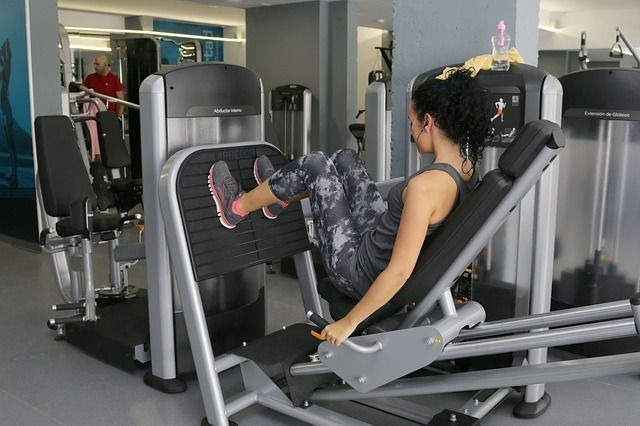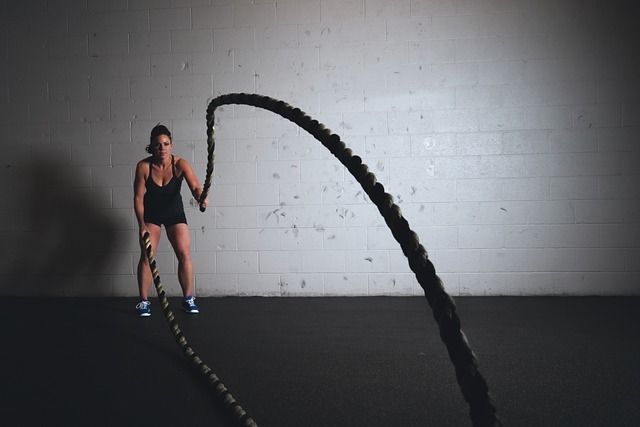QUARTER 1 - LAYING THE FOUNDATIONS
If you took your foot off the gas over the festive period and not made it to the gym as many times as you’d hoped, or maybe you couldn’t resist the seasonal temptations and you’ve now ended up more stuffed than the Christmas turkey, don’t worry. It doesn’t matter too much what you did between December and January... it’s what you do between January and December that really counts!
BEFORE YOU START
As you set out, remember this is a year-long journey, so try not to rush in and overdo it as you’ll either end up injuring yourself or feeling so sore that you’ll give up. Either way, you’re finished before you’ve truly started. It’s important to use the first couple of months as an induction period, the chance to familiarise your mind and body with the challenges ahead, just as an elite athlete begins gentle training for the Olympic games a long way out.

Be aware there is a danger that, if you already carry muscle strength or mobility imbalances within your body, perhaps from old sports injuries or even repeated daily work tasks that stress the musculo-skeletal system, committing to a workout plan could perhaps exacerbate these. A great first step, therefore, is to try a few Pilates classes to learn about correct posture and to help you identify your own strengths and weaknesses, more importantly, how to remedy such. This will then give you a healthy starting point from which to build your performance.
GUIDELINES
-You are strongly advised to consult a medical professional prior to embarking upon a new exercise regime, particularly if you have any concerns regarding your current state of health.
-The strength training routines are designed to pair body parts so that different muscles groups are used on alternate exercises. This approach allows you to move directly from one exercise to the next, so you can get in and out of the gym in minimum time but it also produces a great cardio benefit, in addition to muscle toning. The routines will always follow the same 3 phases – legs + back, chest + abs, biceps + triceps model and the 3 sets will be performed, for example legs-back-legs-back-legs-back, with no rest between. Then take a quick breather while you set up for chest + abs exercises and do the same. Finally, take a quick rest before the last phase of biceps + triceps exercises. Don't worry, we've not missed the shoulders, they will be incorporated in the back and chest exercises. This will ensure you achieve a total body workout in only 30mins. The resistance should be set to ensure you hit fatigue during the last couple of reps on each set.
-Your muscles need fuelling up if you are to get the best from your gym time, so try to take a carbohydrate snack around 30mins prior, perhaps a banana or a cereal bar.

-Always take at least 5mins to warm up, ideally with cardio exercise. The rower is your best option, as it targets the whole body, but running and cycling will also suffice.
-Similarly, take at least 2mins after each session for gentle cardio to bring your heart rate back down, slow your breathing and avoid blood pooling in your muscles that can lead to a risk of fainting.
-Your cardio and strength sessions start at 2 of each per week and build to 3. Ideally these will be done on different days, allowing you 1 full day of complete rest each week. However, you could also combine your workouts (although this will be very challenging once the intensity of each builds through the year) but if so, you are recommended to opt for strength first then follow with cardio to get optimum results.
-Although the plan includes target intensities, always listen to your body and learn to identify the important difference between the healthy sign of fatigue from a good workout and the warning hidden in sharp or shooting pains.
-If you are unsure how to correctly perform any of the toning exercises, seek advice from one of the instructors in your gym.
JANUARY
Cardio
Cardio exercises can be anything from rowing, cycling, swimming, running but ensure you spend around 30mins at 55% of your maximum working heart rate (220-age) 2 times per week.
Toning
Resistance training at this point should be in the form of a circuit-based format, 2 times per week, allowing you to hit the whole body whilst also affording the opportunity to learn or refresh correct techniques. Opt for either studio circuit classes such as BodyPump or go solo, working your way around the gym fixed-stations, alternating between upper and lower body exercises lifting only 1 set of 12 reps at only around 50% of your maximum.

Nutrition
Start keeping a food diary, making sure to record everything you eat and drink.
FEBRUARY
Cardio
Aerobic exercise will still be the mainstay of your workout, as good cardiorespiratory fitness is vital for all that is to follow, but now you should up the intensity so your heart rate is at around 65% of your maximum working figure. Still aim for 2 sessions of 30mins duration each week.
Toning
For resistance, follow this routine, performing 15 repetitions of each exercise for 3 sets, remembering to alternate between legs and back, chest and abs, biceps and triceps, as described in the Guidelines, above. Your target is 2 strength sessions per week.
squat + seated row
bench press + crunches
barbelll curl + tricep pushdown
Nutrition
In your food diary, start to add, briefly, how you felt just before and just after each bout of refuelling.
MARCH
Cardio
Increase your aerobic efforts to 30mins at around 75% of your maximum working heart rate and now go for 3 sessions per week.

Toning
Keep your resistance exercises the same but now perform 15 repetitions of each exercise for 3 sets, 3 times per week rather than 2.
Nutrition
Start to reduce calorie intake by replacing fatty and sugary snacks with healthy fruit and vegetable options.
Future Fitness
In my next blog, to take you through quarter 2, we’ll look at how to harness the fresh energy spring brings and vary your workouts to keep you motivated and progressing towards your goals.